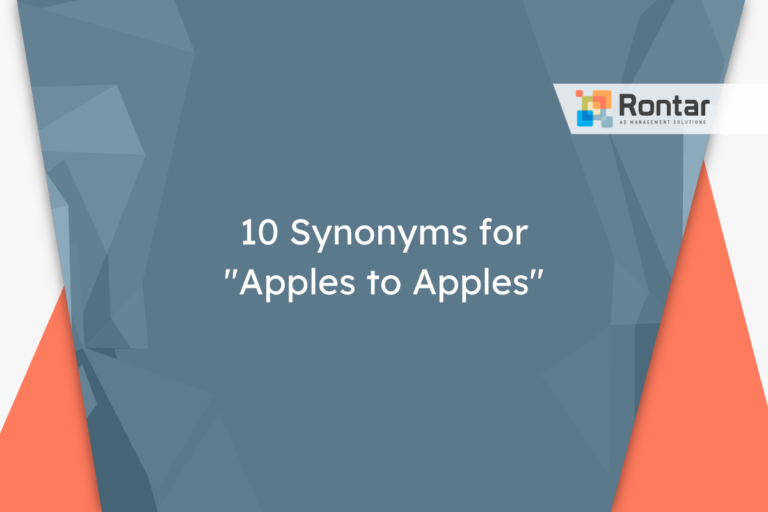10 Professional Synonyms for “Warmest Regards”

Ending a professional email effectively can impact how your message is received. “Warmest Regards” is a common and respectable choice, but there are several other phrases that convey similar courtesy.
This article explores 10 professional alternatives that can be used to maintain politeness and professionalism in various communication settings. Whether you’re writing to a colleague, client, or superior, selecting the right sign-off can enhance your professional relationships.
Is It Professional to Say “Warmest Regards”?
The phrase “Warmest Regards” is considered professional, formal, and polite. It’s best used when you want to convey a sense of warmth and personal care in professional emails.
It’s suitable for communication with colleagues, business partners, or anyone you maintain a professional relationship with. It adds a personal touch without being overly casual and works well in various communication channels, including emails and letters.
Example:
Dear Ms. Anderson,
Thank you for meeting with me yesterday to discuss the upcoming project. I appreciate your insights and look forward to working together to make it a success.
Warmest regards,
Tom Harrison
Pros and cons of using “Warmest Regards” are listed below:
Pros:
- Conveys warmth and professionalism simultaneously.
- Appropriate for both initial and ongoing professional relationships.
- Helps soften the formal tone of a professional email.
Cons:
- May be seen as overly warm in very formal contexts or with unfamiliar contacts.
- Could be misinterpreted depending on cultural differences in communication.
- Not suitable for every type of professional correspondence, such as legal or official notices.
While “Warmest Regards” is effective, one might consider using an alternative to better suit the tone and context of different correspondences.
10 Other Ways to Say “Warmest Regards”
Here are ten professional alternatives to “Warmest Regards” that can be used in workplace emails:
- Best Regards
- Kind Regards
- Warm Wishes
- Best Wishes
- With Appreciation
- Yours Truly
- Sincerely Yours
- Cordially
- Respectfully
- With Best Regards
1. Best Regards
This synonym is very professional and slightly less warm than “Warmest Regards,” but still polite. It’s a safe, professional choice that fits most workplace emails.
It works well in formal and semi-formal messages with colleagues, clients, and senior management. It’s suitable for emails where maintaining a strong, professional stance is essential. We recommend using this alternative in formal emails where relationship building is vital but a personal touch is not required.
Here’s an example:
Dear Thomas,
Thank you for your quick response to our inquiry. We look forward to your detailed proposal.
Best regards,
Alice Martin
2. Kind Regards
This alternative is also very professional and conveys a friendly, polite tone. It’s commonly used in both business and casual professional emails.
Best suited for less formal but still professional correspondence, “Kind Regards” is ideal for messages where you want to seem approachable and friendly. We recommend this for use with clients you have spoken to several times but still maintain a professional relationship with.
Here’s an example:
Dear Emily,
Thank you for the updated report. I appreciate your attention to detail and timely delivery.
Kind regards,
Eric Johnson
3. Warm Wishes
“Warm Wishes” is slightly less formal than “Warmest Regards” and is still very polite. It conveys a genuine, friendly sentiment.
Ideal for correspondences during the holiday season or personal achievements where a warm, human touch is appreciated. It suits both professional and semi-formal emails, especially those that are not strictly business-related but still occur between colleagues or business partners.
Here’s an example:
Dear Marcus,
Congratulations on your recent promotion! Wishing you great success in your new role.
Warm wishes,
Julia Sanders
4. Best Wishes
This alternative communicates hopes for good fortune and is both professional and congenial. It’s suitable for situations where you want to express support or good intentions.
Best used at the end of a communication that might precede a challenging project or a personal venture, like starting a new position or project. It works well with both colleagues and clients when you wish to convey best intentions.
Here’s an example:
Dear Carol,
Good luck with the launch next week. We all believe in your team's capabilities.
Best wishes,
Ronald Thompson
5. With Appreciation
This phrase stands out by emphasizing gratitude, making it a warm alternative while maintaining professionalism. It’s highly respectful and ideal for showing acknowledgment.
Perfect for emails focusing on thanks or acknowledgment of a team’s or individual’s efforts. It’s especially relevant when you’ve received a favor or special assistance from someone within a professional context.
Here’s an example:
Dear Helen,
Thank you for your quick action on this issue. It’s clear your team is committed to excellence.
With appreciation,
Frank Pierce
6. Yours Truly
This is a traditional, formal sign-off, but less common today. It’s very professional and has a personal touch.
Often reserved for more traditional business sectors or communications that aim to echo a classic tone. It suits formal letters more than emails but can be used effectively to end a message with a distinguished touch, especially in the legal or academic fields.
Here’s an example:
Dear Professor Lawson,
I have submitted my thesis document for your review. Please let me know if there are any areas needing revision.
Yours truly,
Susan Clark
7. Sincerely Yours
A very formal and polite option, “Sincerely Yours” is a sign-off that expresses sincerity. It is more formal than “Warmest Regards” but still maintains a polite tone.
This alternative is best used in more formal emails where a respectful closing is necessary. It is ideal for first-time communications, formal requests, or when addressing senior officials or dignitaries.
Here’s an example:
Dear Mr. Walters,
Please find attached the documents you requested. Each file is labeled according to the contents.
Sincerely yours,
Janet Lee
8. Cordially
Comparable to “Sincerely Yours,” “Cordially” is also very formal and expresses respect and politeness. It’s somewhat old-fashioned but remains effective in professional settings.
Best suited for formal invitations or announcements within a company or professional group. This closing can also be used effectively in formal written proposals or grant applications.
Here’s an example:
Dear Members,
We invite you to join us for the annual networking event scheduled for June. RSVP details are included below.
Cordially,
George Brighton, Events Coordinator
9. Respectfully
This closing is very formal, suggesting a high level of respect for the recipient. It’s a strong and polite ending to professional communications.
Typically used in communications involving authority figures or discussions that require a tone of deference, such as emails to government officials or corporate executives. It’s also suitable for sensitive topics where respect is paramount.
Here’s an example:
Dear Councilwoman Smith,
We submit this appeal for reconsideration based on the recent developments in the community.
Respectfully,
Jacob Turner, Community Liaison
10. With Best Regards
This alternative strikes a balance between warmth and formal propriety. It is similar to “Warmest Regards” but adds a touch of extra formality.
Appropriate for both business correspondences and more personal interactions within a professional setting. It is versatile enough to be used in emails to peers and superiors alike, particularly in industries that value a collaborative atmosphere.
Here’s an example:
Dear Team,
Please review the enclosed sales performance data before our meeting on Wednesday.
With best regards,
Liam Peterson
Final Thoughts
Choosing the right closing phrase for your professional emails is more than a mere formality; it sets the tone and demonstrates respect towards the recipient. The alternatives to “Warmest Regards” listed in this article offer flexibility depending on the context and relationship you have with your correspondent. Using these variations appropriately can help you project professionalism and warmth.






